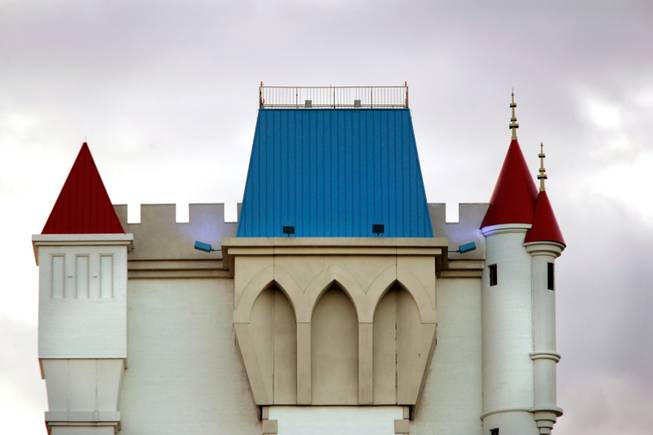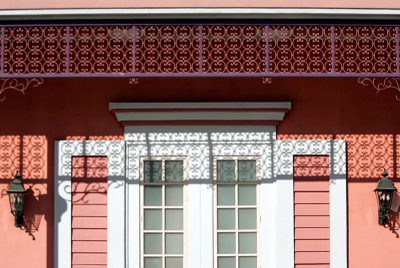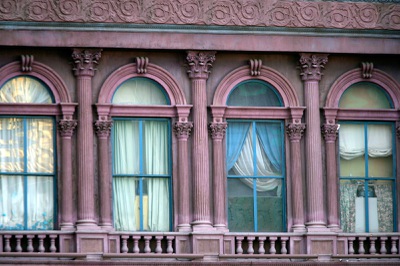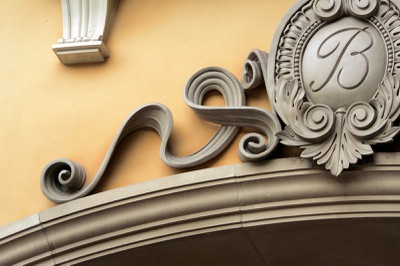
These decorative elements of the Excalibur form an example of the use of construction foam, which is popular because it can mimic more expensive materials such as brick and stucco. The foam at the Excalibur has never caught fire.
Sunday, Feb. 3, 2008 | 2 a.m.
For all the attention that has been heaped on the foam that burned in the Monte Carlo fire Jan. 25, the hotel could be rebuilt today using essentially the same kind of foam in the same applications because the stuff is fine, experts and building officials say.
Yes, foam burns. So does wood. Either one is dangerous when it catches fire. And during the hotel fire, blazing pieces of the foam dripping onto lower ledges made for dramatic TV.
You want to avoid fire? Build with concrete.
The Monte Carlo, which opened in 1996, was constructed in accordance with the 1991 Uniform Building Code. And the regulations in that code that related to foam insulation products are virtually the same ones in the 2006 International Building Code, which applies today, said Mike Pfeiffer, senior vice president of technical services for the organization that writes the code.
According to the Clark County Fire Department, the fire erupted after rooftop welders, constructing a walkway, allowed molten steel fragments to fall onto the roof, causing a fire that spread to the hotel’s facade. The three-story-high wall, constructed largely of foam, hides rooftop machinery and gives the building’s top a clean-looking finish.
The 3,002-room hotel was evacuated during the blaze, and eight people were treated for smoke inhalation. The hotel remains closed for repairs.
Ron Lynn, director of Clark County Development Services, said he wants samples of the damaged facade assembly shipped to a laboratory to study how the foam burned.
“I will always look at enhancing the codes when it is warranted, so I am open to that possibility,” Lynn said.
“It’s premature to make a decision because I don’t have all the samples yet from the Monte Carlo to see what burned.”
Since the fire and the resulting news coverage, Las Vegans have become suddenly aware of construction foam. The material has a long history here, not only for its use in facades but because it can be easily crafted to imitate stucco, brick or other materials at a fraction of the cost.
The foam, which can be cut and sculpted to look like finely honed cornices or ancient Italian statues, or to create other architectural touches, is typically attached to wood and protected with a reinforcing mesh, base and finish coats. In the building trade, they are known as Exterior Insulation and Finish Systems.
The company that made the foam used at the Monte Carlo has not been publicly identified, but Sto Corp. of Atlanta, a leading maker of such products, has a picture of the hotel on its Web site accompanying a description of some of its products. Repeated calls to its spokesman for comment were not returned.
The Monte Carlo fire has triggered discussion about how intensely the foam burns.
Monte Carlo Burns
Smoke engulfs the Las Vegas skyline as the Monte Carlo burned for about an hour Friday, Jan. 25, 2008. Las Vegas and Clark County firefighters were able to contain the three-alarm fire that touched off on the top floors of the 32-story resort. At least seven people were injured in the nearly full 3,002-room hotel — the 13th largest in Las Vegas.
Lynn said that depends on the temperature to which it is exposed.
“At 250 to 275 degrees Fahrenheit it shrinks back from its coat and at higher temperatures begins to melt,” Lynn said. At 650 degrees, the liquid foam becomes flammable.
Welding slag can reach 1,000 degrees, Lynn noted.
There has been considerable debate in the construction industry about whether to require facades be constructed of nonflammable material, but naysayers say those products are expensive, especially for large projects.
Construction foam products, first used in Europe in the 1950s to insulate old masonry buildings, became popular in the United States in the 1970s as the oil crisis forced builders to become more energy efficient.
The use of foam encountered rough going in the 1990s, when homeowners sued the manufacturers, claiming poorly installed foam installation systems allowed water seepage that promoted mold.
A foam-related fire occurred in Atlantic City in September at the Borgata hotel’s Water Club, which was under construction. Much of the building’s exterior foam was still exposed. As at the Monte Carlo, the damage to the club was mostly to the exterior, but it was extensive enough to delay the club’s opening until at least this summer. The cause of that fire remains under investigation.
That interior damage in the Monte Carlo fire was held to a minimum is proof the building codes worked for that hotel, Lynn said.
“The codes are designed for the survivability of the building’s occupants,” he said.
The International Code Council, which publishes code books every three years for local and state governments throughout the country, modifies codes after consulting with construction, fire and other technical experts.
Pfeiffer said most changes in foam plastic insulation regulations from 1991 to 2006 have had to do with testing requirements for foam. There is no maximum allowable foam width in the code per se, but Pfeiffer said the width can be restricted if the foam in question does not meet certain fire performance standards.
“The code is always evolving when new issues are brought to light,” he said.
Lynn, who has been in contact with the code council in the fire’s aftermath, said one potential change in the codes would be new fire standards to account for foam pieces that are damaged, whether through construction or poor maintenance.
“Maybe the standards should take into account when the assembly is compromised,” he said.
Fire safety consultant Ronald Alpert of Rockport, Mass., suggested the foam insulation codes are woefully inadequate because they fail to limit how close construction debris can be to foam.
“Very often these kinds of fires can be caused by other materials close by, like trash stored next to the building,” Alpert said.
Sun reporter Mary Manning contributed to this article.




Join the Discussion:
Check this out for a full explanation of our conversion to the LiveFyre commenting system and instructions on how to sign up for an account.
Full comments policy